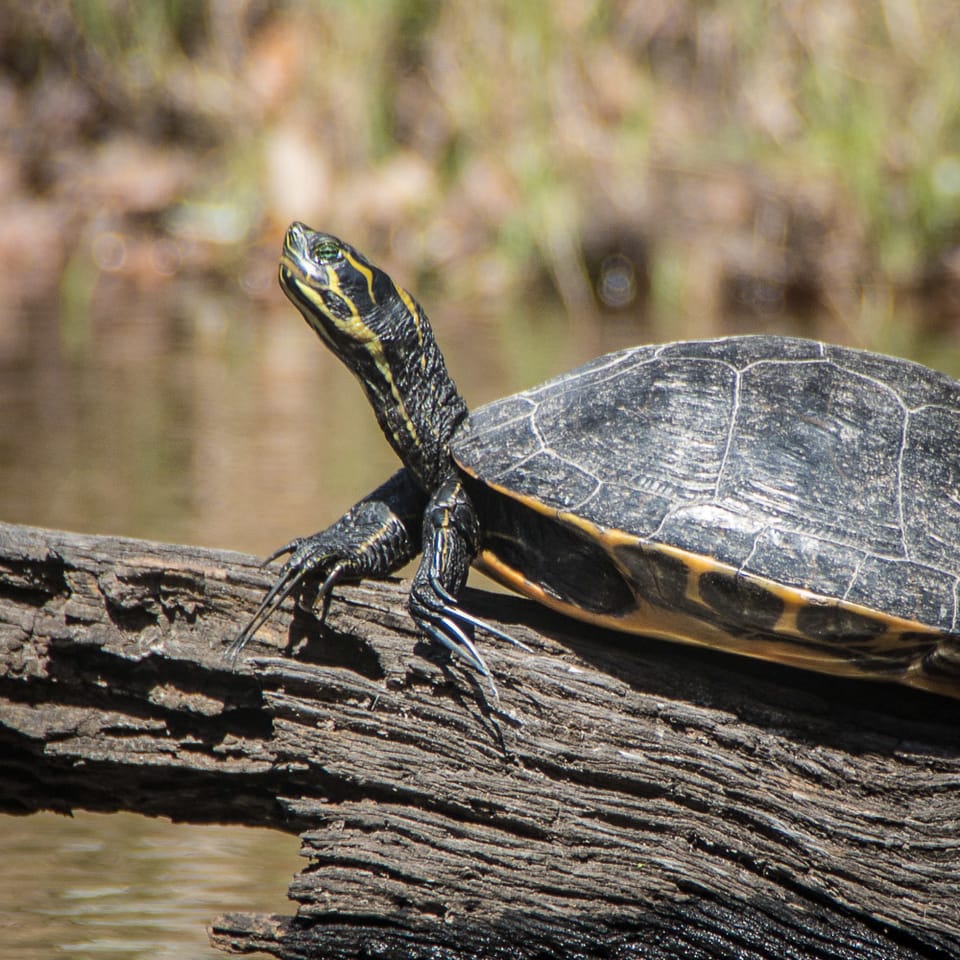Nails, Talons & Claws

Fingernails protect our fingers and help us to pick up objects, but they’re limited in function compared to animal claws and paws.
Birds
Birds use their claws to hold onto branches, to dig into the bark when they climb a tree, and to catch food. Osprey, like most raptors, have “four long toes—three in front and one in back. As the bird reaches for a fish, its outer front toe swivels to the rear, giving it two grasping talons front and back. And those toes are lined with short, stiff spikes for extra grip.”
Bird feet are adapted to suit their behaviour and environment. Birds that walk a lot normally have flat feet with a smaller backward-pointing toe. Shorebirds that spend a lot of time on soft surfaces usually have some webbing between their toes. “Ravens in the arctic have up to six times thicker, horny insulating soles on their feet than do tropical ravens.”
Bears
The grizzly bears’ long front claws (2-4 inches) are used for digging up roots and ground squirrels or excavating a den. Black bears have shorter claws that are sharper and more curved. They use them to climb trees as an escape mechanism and to tear into rotten logs and stumps looking for insects.
Cats
Cats, both wild and domestic, have retractable claws. The claws are sharp, helping them to hold on to their prey or to protect themselves. They keep them sharp by scratching a pole or log and by retracting them when they’re not in use. Dogs don’t retract their claws, so if you spot a paw print with claw marks, you’ll know it was made by a canine, such as a coyote or red fox.
Some cats have semi-retractable claws. Cheetah use their claws for traction when they’re running at very fast speeds. The claws “act like cleats on a shoe so the cheetah doesn’t lose grip and slip as it chases its prey. Their dew claw, sometimes referred to as their thumb claw, is sharper than the rest as it’s higher off the floor. Once they catch up with their prey they trip it up and then hook it with these claws.”
Turtles
Male painted turtles have extremely long front claws which they use during courtship. “Courting takes place in the water: the male moves backwards facing the female while waving the long claws in a trembling motion along the sides of her head and neck. Mating takes place if the female is receptive to the male's display.”
Beetles
Beetles have claws with two sharp hooks that they use to grip the ground. Scientists have discovered that the beetles can open and close their claws so they don’t catch in the surface they’re walking on. They close the claws when lifting their leg and swinging it forward and open them again when they lower their leg to the ground.
Porcupines
Porcupines have long claws that are a great help in climbing trees. In addition, the palms and soles of their feet have a pebbly surface that helps them grip and gives them a keen sense of touch. “Because they are so good at gripping trees, porcupines can even stay in trees using only their hind feet to hold on. This frees their forelimbs for use in eating.” Porcupines aren’t particularly graceful, so they do sometimes fall out of a tree. This could be a problem if they poked themselves with their quills. Fortunately, “their quills possess special antibiotic properties that protect them against infection.”
Monarch Butterflies
Monarch butterflies migrate to Mexico to escape harsh winters. When they arrive, they huddle together, clinging to trees with their claws and semi-dormant to preserve energy. Clusters of butterflies will sometimes interlock their claws and hang together. When it gets too cold, the butterflies float down, but they keep their claws extended to hook onto something on the way down.
Insects
House flies and many other insects can walk on smooth perpendicular surfaces, including ceilings, glass doors and windows. But even the smoothest surface has tiny bumps and cracks. These serve as footholds for the tiny bristles on the insects’ feet. They also have tiny claw-like structures on each of their leg joints that can be used to grip.
Photo credit: https://www.flickr.com/photos/apmckinlay/8519280311
EcoFriendly West informs and encourages initiatives that support Western Canada’s natural environment through its online publication and the Nature Companion website/app. Like us on Facebook, follow us on Twitter or Mastodon, or subscribe by email.

Member discussion